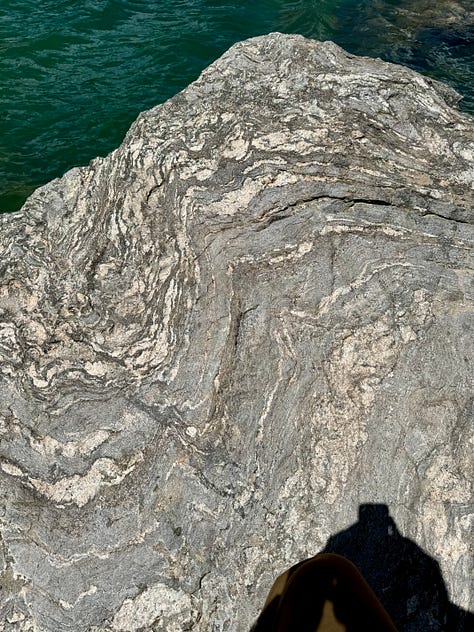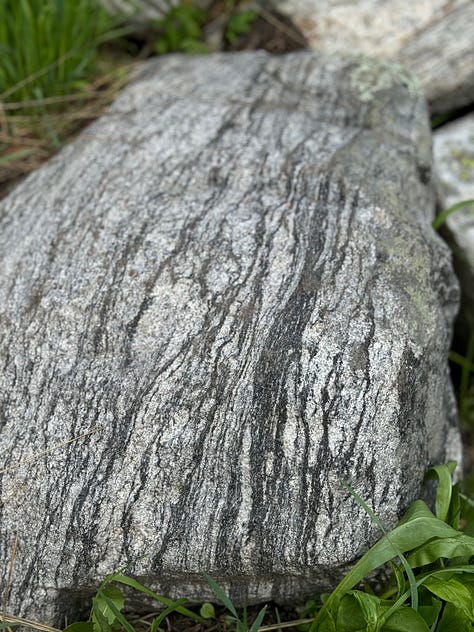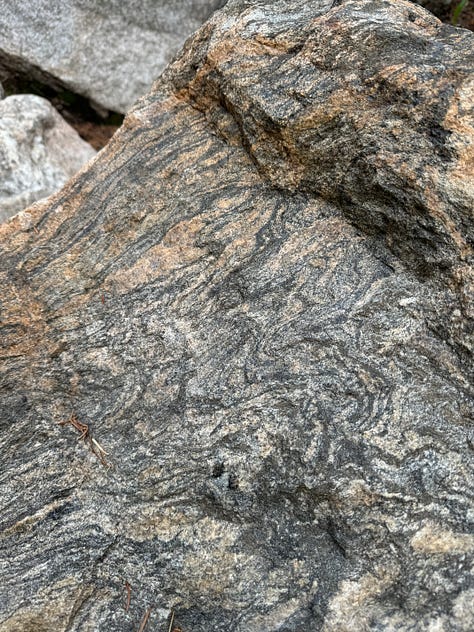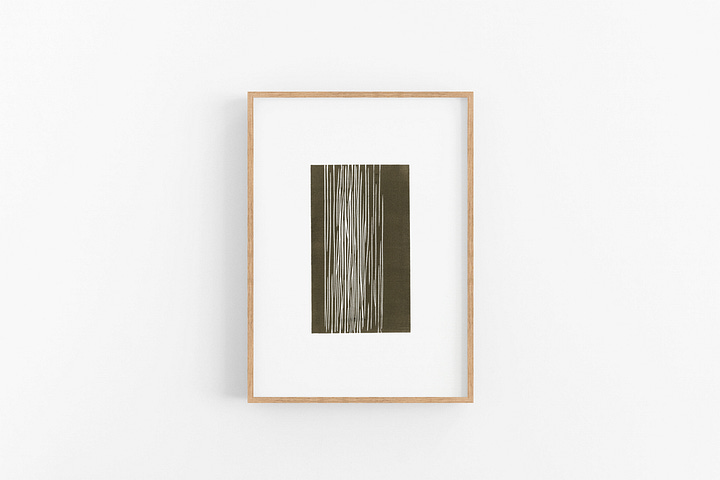Designing with Nature
How repetition and natural systems shape creativity in printmaking and design
Adventures with Meghan and I are always the same: Meghan finds a trail that leads to the most stunning landscapes the park has to offer. She’ll trudge ahead with her DSLR body, multiple lenses, and extra batteries stuffed into a kangaroo pouch bag hanging from her chest while stopping only for an energy gel or two. She can be up a six mile summit over an alpine lake in the blink of an eye. And she’ll capture the most beautiful landscape photos you’ve ever seen.
Meanwhile, I’m a quarter mile behind her taking 32 pictures of a rock.
Meghan will pull away from her viewfinder, see that I’m nowhere to be found, and greet me as I come running up the trail with a “did you find another fun pattern?”



Nature inspires me with its details—the pattern you find in a rock, the way sandstone is eaten away at by the wind over centuries, the way waves fall into repeating sequences that make the distance between each peak nearly identical. None of these are accidents. And I find the complex systems that create these details to be better artists than myself.
As a designer, my work often revolves around defining a few principles for my work. This helps me stay consistent, solve problems appropriately, and keep things on brand. These ‘rules’ have a way influencing everything I touch, so it’s only natural that a set of principles has emerged over time for all of Cypress’ work. I wanted to share a few of them with you:
Principles from nature
Principle 1: Repetition leads to beauty
Tree rings and rock strata are the most common elements in my camera roll. They are my favorite example of how repetition over long periods of time creates organic, flowing, dynamic patterns.
What’s beautiful is how one small variation within that system leads each piece to become fully unique.
And these patterns show you how external forces have affected them over time. A cypress tree ring will show you where it was reaching for more water with the rings that bulge out in a different direction. A sandstone cliff will show you the years that had more rainfall or a particularly bad sandstorm, all from millennia ago.
Unsurprisingly, my library is now full of geology books that I pick up throughout my adventures. Check out How to Read a Rock if you want to jump in with me head first.
Layer after layer of material builds up inconsistently, but over consistent periods of time, to create designs that we could never think up on our own. What’s beautiful is how one small variation within that system leads each piece to become fully unique.
A lot of my prints and studies try to embody repetition as a singular focus. I enjoy sitting down and asking myself, “How do I represent an image with only lines?”


Principle 2: Small details create larger wholes
Nature is made up of countless small elements that together form cohesive, breathtaking compositions. Individual trees come together as a forest, drops of water make up a meandering river—it’s the sum of all of these parts that make a particular scene so meaningful.
I try to think of every little detail in both my day to day design work and the prints that I make for Cypress. It’s easy to imagine that well designed products are the outcome of treating each decision with care. That’s the same mentality I want to bring to each and every line that is carved into a linoleum block. Linocut prints rely on the careful arrangement of small cuts and shapes to form a detailed image. The precision (and often mistakes) of each small element contributes to a complete composition.
And not every cut needs to be perfect. It just needs to be intentional.
When friends ask why I appreciate hand carved work more than paintings or digital creations, I often point to places in the work where I can see where the knife went astray or where the ink bled into a trap unexpectedly. It’s the combination of intentional cuts and hand made mistakes that make up pieces that I fall in love with.
I once read a book called Don’t Sweat the Small Stuff that changed how I handle everyday problems. I think about it very often—not because of how much it helped me in life, but because the title of it couldn’t be more the exact opposite of how I think of printmaking and design work. I sweat every little detail. Because every little detail comes together to make up something bigger.
Principle 3: Nature is the better designer
This one is more an admission of truth than a principle I try to replicate. But I think about it with every piece of art I make. I am obsessed with nature because it can create things that I can’t. And to have the chance to explore and appreciate and take inspiration from the environment all around us is freeing once embraced.
The water cycle, coral reef ecosystems, rock metamorphism… these natural systems work on timelines to produce artwork unlike anything I could ever dream up. I would encourage everyone I know to watch the 15 minute “Window in Time” presentation if you’re visiting Arches National Park or to visit the Avenue of the Giants visitor center one day and touch the rings of the redwood that started growing in 1148. Your sense of scale changes in seconds once you realize how long nature has been designing everything that’s around us.
It’s why Cypress will always pull from nature for inspiration, and why I’ll happily admit that real topography, layers of real rocks, and colors found together out in the wild are always going to be better than anything I could make.
Thanks for reading. Stick around and hear stories from the road. I can’t wait to share some new prints from some of our recent trips.
See you again soon 🏔️







